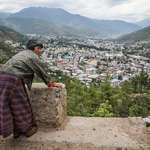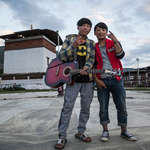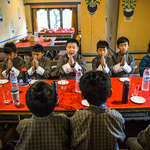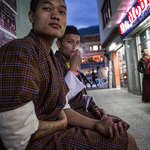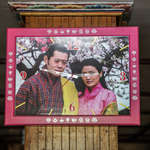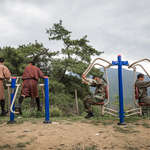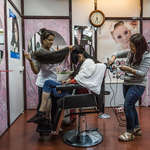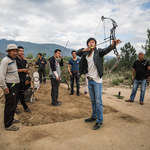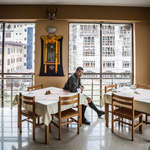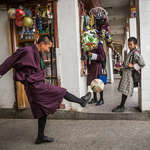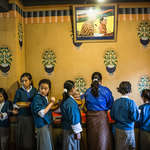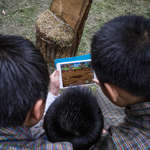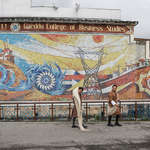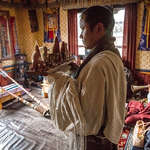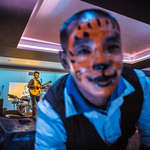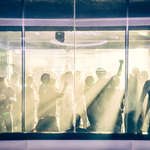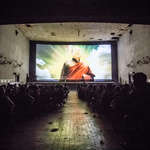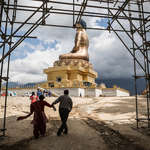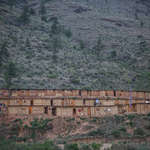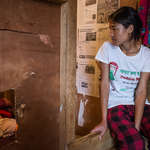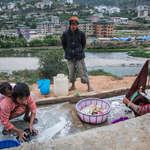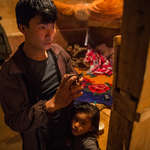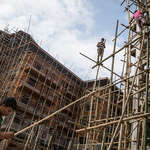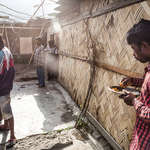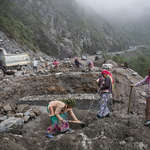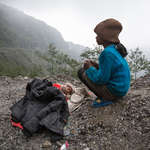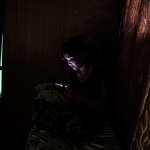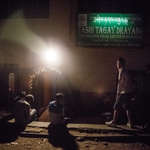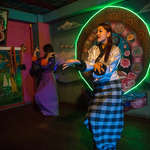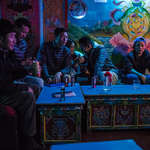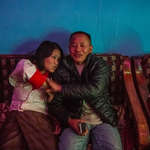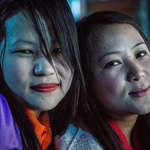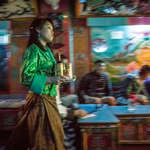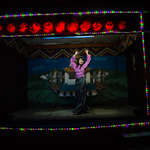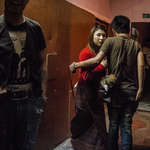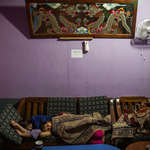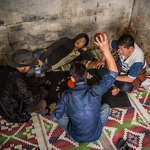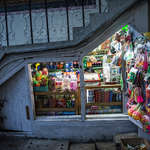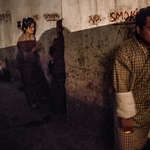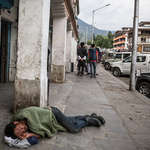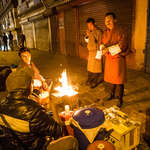
-
In the age of universal mobile phone connectivity, Facebook, Twitter and Lonely Planet guides there are still a few countries, which circumscribe independent tourism by way of strict laws and visa requirements. North Korea takes great pains to ensure that foreign visitors only get to see the socialist utopia the country’s Stalinist regime is trying to project by tightly controlling the movements of visiting tourists. In Turkmenistan, where the late president Saparmurat Niyazov, known to his people as Turkmenbashi (‘Father of the Turkmen’), renamed the months of the year after, among others, himself and his mother, tourists have to be accompanied by a guide at all times. In both cases, the regimes appear to have something to hide. Yet in the mountain kingdom of Bhutan, a country of less than 800,000 people, the authorities insist that chaperoning of tourists promotes and maintains the peoples’ well being.
All visitors to Bhutan have to pay around $ 250 per day and be accompanied by a guide. All visas have to be approved by the Ministry of Foreign Affairs and visas can only be issued in person upon arrival in the country. The daily fees paid by visitors go toward supporting free education and healthcare for Bhutan’s citizens while helping to alleviate poverty.
-
While tourists are not monitored at all times and their freedom not as restricted as in North Korea or Turkmenistan, it is difficult for adventurous visitors to convince official guides to take them ‘off piste’ and away from the official programme.
For much of the 20th century, the ‘Kingdom of the Thunder Dragon’ (as the national anthem extols the country’s name) was largely isolated from the outside world with the ban on television and the internet only being lifted in 1999. The country’s former king Jigme Singye Wangchuck explained to his subjects these technologies should contribute to the kingdom’s modernisation but that ‘misuse’ could affect traditional Bhutanese values adversely. In 1972, the king had floated the idea of Gross National Happiness (GNH), a more social counterpart to the economic Gross Domestic Product (GDP).
Ever since, Bhutan’s domestic policymaking has revolved around what will make the people happiest, measured by sustainable development, conservation of the natural environment, preservation of cultural values and the establishment of good governance.

-
Yet Bhutan’s record as the guardian of its citizens’ well being is by no means universally applied. In the 1990s the government expelled and forced to leave over 100,000 members of the Lhotshampa minority, an ethnically Nepalese group which had settled mainly in the south of the country.
The mountain kingdom had witnessed violent ethnic turmoil in the region for the past two decades, with East Bengal breaking away from Pakistan in 1971 and the kingdom of Sikkim, also with large Nepali and Tibetan minorities, being annexed by India in 1971. The Lhotshampa ended up in refugee camps in neighbouring Nepal, which refuses to give them citizenship and many thousand remain here.
Due to its proximity to India, a giant neighbour with virtually inexhaustible cheap labour, Bhutan is a popular destination for migrant workers who are mainly employed in the construction industry.
-
According to a survey conducted by the Ministry of Trade and Industry and the Bhutan Chamber of Commerce, Bhutanese workers are largely uninterested in low skill, low pay jobs and are happy for migrant workers to take up the slack. This, however, has led to some exploitative practices in the construction industry, including child labour. Bhutan’s tourism authorities are keen to avert visitors’ eyes from Indians toiling under Bhutanese auspices.
Another well known, yet relatively hidden aspect of Bhutanese life is the drayang, a cross between a bar, a burlesque dance club and, in some cases, a brothel. Local girls are employed to perform for men are often give out their phone numbers, offering ‘special services’ after the performance. Though it is hard to gauge how widespread the practice is and how many of 30 odd drayangs are merely late night bars with entertainment yet the issue was important enough to be raised in the national parliament, an illustration of how seriously the government takes the peoples’ well being, both material and spiritual.
Bhutanese woman, wearing a traditional 'kira', looks over Thimphu from a hillside. In the recent years the housing development has increased in Thimphu as more people are looking for the urban-style life and moving to the capital from the country side.
The co-founders of a band 'Awesome Crew' Sonam (15, left) and Chundutshering (21, right) standing in the main square of Paro, the second biggest town of Bhutan.
Grade 5 students at the Thimphu Private Primary School pray before meal in a restaurant at the Folk Heritage Museum, where they were on an excursion. Despite that public schools are free until Grade 10, many government officials and business people prefer to enrol their children to private schools.
Schoolboys smoking a cigarette while hiding in an alleyway.
A clock with a portrait of the King of Bhutan Jigme Khesar Namgyel Wangchuck and his wife the Queen Jetsun Pema in a restaurant near the Tala Hydroelectric Power Station. The royal family is very popular in Bhutan, especially among the youth. The king regularly travels across the country and meets with the people, promoting democratisation of the Kingdom. He stated that the responsibility of this generation was to ensure the success of democracy.
Members of the Royal Bodyguard of Bhutan, the elite unit of the Royal Bhutan Army, training on the outskirts of Thimphu. The Bodyguards, numbering more than one thousand people, are in charge of protecting the King of Bhutan and members of the Royal Family.
Hairdressers at Tenzin's Hair and Beauty Academy straightening hair of an ex-pat client. The academy is considered the best beauty salon in the capital and is visited by members of the Royal family, wives of the government officials and expats etc.
Members of Paro archery club practising on the town's outskirts.
A tour guide waits for his group to finish their meal at the Cousin Restaurant. All visitors to Bhutan have to pay USD 250 per day and have a guide, who will be in control of what you see and what impression of the country you will have by the end of the trip. Most tourists visit same restaurants and stay in same hotels; walking on the streets without a guide is possible, but not encouraged.
A young man kicks a ball with children in the city centre. They are all wearing the traditional 'gho'.
Grade 5 students from the Thimphu Private Primary School line up for a buffet lunch in a restaurant at the Folk Heritage Museum, where they were on an excursion.
Students from the Thimphu Private Primary School playing a game on an iPad during an excursion to the Folk Heritage Museum.
Two men passing a mosaic mural at Gaeddu College of Business Studies.
Karma (25, right) holds his 10 week old daughter while his wife Lodigelmo (25, left) gets out of their car. Karma works as a graphic designer in a small local company in Paro town. Dressed traditionally specifically for a meeting with a Buddhist monk, Karma and his wife normally wear western clothes.
Shop owner Nima, 39, holding an offering to the spirits during the Puja ceremony in his house in Paro town. Puja is a daily Buddhist ritual of making offerings and chanting that many Bhuddist perform in their homes. On special occasions people invite monks to their houses to make special offering to Buddha in a grand manner.
A waiter takes drink order from customers at the Space 34 nightclub, while an 18 year old singer 'Jamming Rinchen' performs on a stage. Space 34 is well hidden from the outsiders. It filled mostly by the rich youth and expats living in Bhutan. It's one of a very few place where smoking indoors is tolerated.
People dancing in Space 34 nightclub. Space 34 is a club well hidden from outsiders on a side alley. After 2 am, when the club clothes, many customers drive their cars to the the Buddha Dordenma statue. In a country with a very strict Buddhist traditions, the Buddha hill is a famous place where young people can have casual sex in their cars.
A Buddhist monk appears on the screen of a cinema during the screening Bhutanese movie Mermaid 2. In Bhutan movie theatres became popular in the late 1980s, when TV was still banned. After several years of showing mostly Bollywood or old Hollywood films, now all the theatres mostly show Bhutanese movies in their repertoire. The Bhutanese film industry is booming; local movie makers produce an average of 25-30 films a year. In most of the films Bollywood-style love stories are blended with Buddhist traditions and teachings. Recently the Bhutan Film Association announced the construction of a US$90 million 'Film City' with post-production facilities and indoor studios built on 150 acres of leased government land just outside of Thimphu.
People entering the construction site of the Buddha Dordenma statue. At a cost of over USD100 million the Buddha Dordenma Project will be one of the largest Buddha statues in the world with height of more than 50 metres. Bhutanese people believe that building of the statue was prophesied and that it will bestow blessings, peace and happiness on the whole world.
Tshelamafek worker's camp outside the Bhutanese capital. Most of its residents came to Thimphu from rural areas of Bhutan to work for a few years at sites for religious constructions. Bhutanese construction companies use mostly cheap labour workers from India to build roads and houses. However, Hindu workers are prohibited from being involved in the construction of Buddhist temples and monasteries. Instead people from poor areas of Bhutan are hired. Thimphu has several workers camps, where thousands of people live in a very poor conditions.
Leki, 24, looks over her sleeping, 14 month old daughter Thukten in a Tshelamafek camp. Leki and her husband moved to the Bhutanese capital from a rural area in Punakha at the beginning for 2015. Leki's husband works as a carpenter and receives about USD 150 per month.
Workers from eastern Bhutan doing their laundry in Tshelamafek worker's camp on the other side of the Thimphu Chu River from the capital.
Tsheringphuntsho, 37, and his 5 year old daughter Sangaywangmo in their room at a worker's barracks, Tshelamafek camp. Tsheringphuntsho brought his family to Thimphu from Gelephu in southern Bhutan after he was offered a carpentry job. The small wooden barracks will house him and his family for four years.
Migrant indian labourers at work on an apartment block construction site. Brought in by the construction companies, mostly from the poor Indian states of Bihar and West Bengal, they are used as a cheap labour at many construction sites in Bhutanese towns. Receiving from 120 to 180 USD per month, they work 10-12 hours a day and live in very poor conditions.
Migrant indian labourers eat breakfast at their worker's camp at an apartment block construction site. Brought in by the construction companies, mostly from the poor Indian states of Bihar and West Bengal, they are used as a cheap labour at many construction sites in Bhutanese towns. Receiving from 120 to 180 USD per month, they work 10-12 hours a day and live in very poor conditions.
Female Indian labourers from Bihar State working on a road construction site on one of the highest cliffs along the Thimphu-Phuentsholing Highway. Brought in by the construction companies they are used as a cheap labour at many construction sites receiving less than USD 200 per month and work 10-12 hours a day. Children also can be seen at some road construction sites helping their mothers to work.
Kulmuni, eight, looks after her two year old sister Sunita while she is sleeping at a road construction site. Their mother works with other Indian women from Bihar State on the Thimphu-Phuentsholing Highway.
Anaya (23, name changed) checks her mobile phone after completing a massage session for a client. Every day she crosses the border from her hometown of Jaigaon in India to Phuentsholing to work in a massage parlour. Massage parlours are very popular in Phuentsholing, mostly among Indian clients. Making most of their money from providing 'extra' sex services, female workers leave the parlours every evening go back to India, as they can't overnight in Bhutan without a legal permit.
People gather at the entrance to 'Tashi Tagay drayang' a club hidden on a side street where girls work dancing for male clients. Most of the girls come from poor rural families and for them it's an easy way to earn some money. They wear traditional Bhutanese clothes and dance for men who come to the 'drayangs' to drink beer. Although officially all 'drayangs' close their doors around midnight and girls are supposed to sleep inside, many clients exchange their phone numbers with the dancers and later meet somewhere else for sex.
Girls dancing on a stage of 'Tashi Tagay drayang' a club hidden on a side street where girls work dancing for male clients.
A group of men sit at a table in 'Tashi Tagay drayang', watching the dancing girls while one of them talks to a female dancer.
A drunk customer of 'Tashi Tagay drayang' grabs a female dancer who works at the club.
Samara (19, left) and Dichen (19, right) dancers in 'Tashi Tagay drayang'. Female dancers receive 40% of what clients pay for the dance and can make from 200 to 400 US Dollars a month.
A female dancer brings a beer to a table of a customer in 'Tashi Tagay drayang' . In drayangs girls work not only as dancers, but also as waitresses.
A young woman dances on the stage of 'Namsay Dzomlha', a town on the border with India where many Indians come for the day without need for a special permit. Many Indian men go to massage parlours or 'drayangs' (clubs), seeking sex with the female dancers.
A client of 'Namsay Dzomlha', a 'drayang' (club) grabs a girl in a corridor after she danced for him. Although officially all 'drayangs' close their doors around midnight and girls are supposed to sleep inside, many clients exchange their phone numbers with the dancers and later meet somewhere else for sex.
Female dancers at the 'Tashi Tagay drayang' sleeping on a sofa after clients have left for the night.
People playing 'parole', a gambling game, inside a house in Thimphu. Bhutan has some of the strictest gambling laws in the world. Only authorised lotteries are allowed, while the rest is banned.
A small street stall selling various drinks, snacks and toys. Many such places also sell tobacco products although it is illegal top do so and is punishable for 3 to 5 years in prison.
People smoking on a backstreet of Thimphu ignoring the 'no smoking' warnings painted on the walls. Smoking in public areas is banned in Bhutan and selling tobacco products is punishable for 3 to 5 years in prison. According to the Tobacco Control Act of Bhutan 2010, cultivation, harvest, manufacture, supply, and distribution of tobacco is strictly prohibited, although personal use is allowed.
A homeless man sleeping on the main street. In spite its focus on national happiness, Bhutan remains one of the poorest nations on Earth. A quarter of its 800,000 people survive on less than USD 1.25 a day, and 70% live without electricity.
Street vendors warm themselves by a fire on the main street. Bhutan's capital is at an elevation of 2,320 metres and even in summer the nights are cold.
